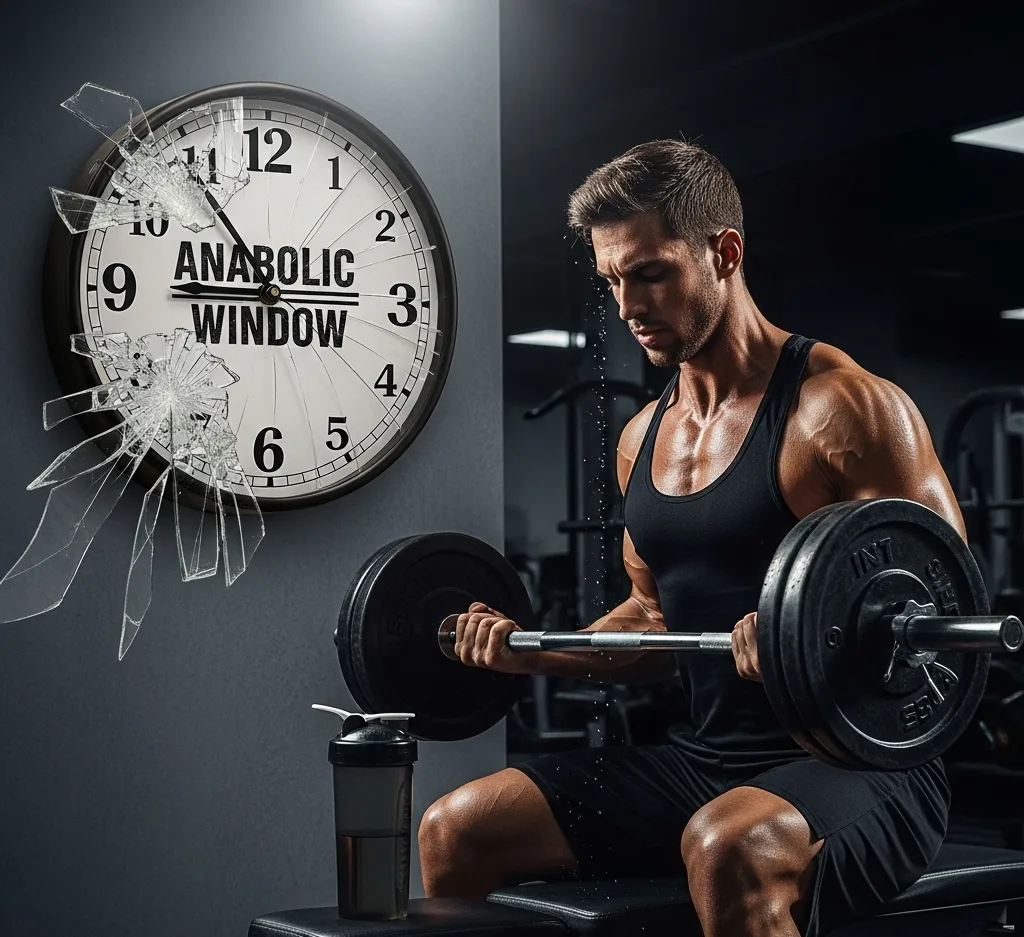For decades, bodybuilders and gym-goers have been obsessed with the so-called anabolic window (also called the metabolic or protein window). You’ve probably heard the claim: if you don’t slam a protein shake with fast-digesting carbs within 30 minutes of finishing your workout, you’ll miss out on gains.
Sounds convincing, right? The problem is… it’s 100% bro science. Let’s break down what’s true, what’s exaggerated, and what the research really says.
Where the Anabolic Window Theory Comes From
The logic goes like this:
-After you lift weights, your muscle fibers are damaged.
-Your glycogen (stored carbs) is depleted.
-To recover and build new muscle, you must immediately consume protein and quick carbs to stop breakdown, spike muscle protein synthesis, and refill glycogen.
On the surface, it makes sense. But here’s the catch: this conclusion is based on assumptions — not hard science.
What the Science Really Says
Evidence #1: Post-Workout Protein Doesn’t Magically Spike Muscle Growth
In 2013, Alan Aragon and Brad Schoenfeld — two of the most respected researchers in bodybuilding nutrition — reviewed all the major studies on the “anabolic window.” Their conclusion?
There’s no solid evidence that consuming protein and carbs immediately after a workout significantly boosts muscle protein synthesis (MPS).
Evidence #2: Muscle Breakdown Isn’t a Problem (Unless You Trained Fasted)
Another argument is that you need simple carbs post-workout to spike insulin and prevent muscle breakdown.
Here’s the truth: muscle protein breakdown only becomes an issue if you trained in a completely fasted state. If you had a pre-workout meal with protein, your body already has circulating amino acids to protect muscle.
Evidence #3: Glycogen Replenishment Can Wait
Yes, resistance training depletes glycogen. But unless you’re doing multiple hard sessions in the same day (like an athlete in a tournament), there’s no rush to refill those stores immediately. What matters is that your glycogen is topped up before your next workout, not 5 minutes after your last set.
The Real Anabolic Window: It’s Much Bigger Than 30 Minutes
Studies show that muscle protein synthesis stays elevated for up to 24 hours after training — in fact, it can be 50% higher at 4 hours post-workout, and more than 100% higher at 24 hours. After about 36 hours, it tapers back to baseline.
This means you have a huge window of opportunity to optimize recovery and growth. The key factor isn’t when you take protein — it’s that you consistently hit your daily protein target (around 1.6–2.2 g/kg body weight).
The Bottom Line
The idea of a strict 30-minute anabolic window is a myth. Unless you trained completely fasted, there’s no need to panic about chugging a shake the second you leave the gym.
Eat a balanced meal containing protein and carbs within a few hours of training.
Focus on total daily protein intake, not the stopwatch.
Use shakes if convenient — not because you’re “on the clock.”
Conclusion: The anabolic window isn’t 30 minutes — it’s the whole day. Consistency beats urgency.

